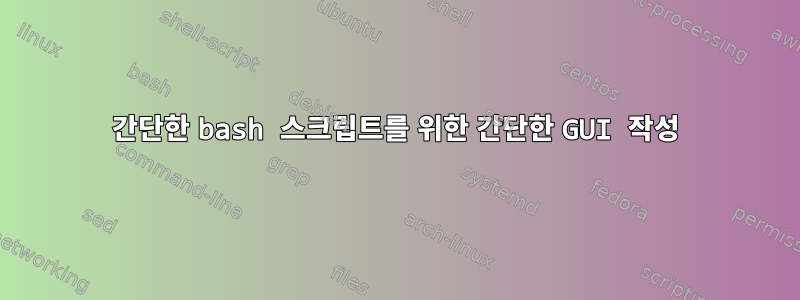
"http"로 시작하는 URL 주소 목록과 관련된 일부 시스템 변경을 수행하는 bash 스크립트가 있으며 이에 대한 GUI를 작성하려고 합니다.
나는 이것의 마지막 부분에 붙어 있습니다 :
changes="$(cat /home/$USER/.updates.log | grep http)"
if [ "$changes" != 0 ]; then
zenity --question --text "Changes found in:\n$changes\n\nWould you like to update now?"
if [ $? = 0 ]
then
# password
sudo_password="$(gksudo --print-pass --description 'MyScript' -- : 2>/dev/null)"
# check for null entry or cancellation
if [[ ${?} != 0 || -z ${sudo_password} ]]
then
exit 4
fi
if ! sudo -kSp '' [ 1 ] <<<"${sudo_password}" 2>/dev/null
then
exit 4
fi
# notify
notify-send "Applying updates..." -i gtk-dialog-info -t 1000 -u normal &
# proceed to update
cuser="${SUDO_USER:-$USER}"
sudo -Sp '' sudo /usr/local/bin/MyScript <<<"${sudo_password}"
# option to view log
new_update="$(cat /home/$USER/.updates.log | grep 'MyScript completed at ' | awk -F ' at ' '{print $2}')"
zenity --question --text "MyScript updated at $new_update\n\nWould you like to view the log file now?"
if [ $? = 0 ]
then
# display log
zenity --text-info --filename=/home/$USER/.updates.log --width 680 --height 680
fi
fi
fi
사실, 나에게 까다로운 부분은 다음과 같습니다.
if [ "$changes" != 0 ]; then파일에 "http"로 시작하는 줄이 포함되어 있지 않으면 "업데이트를 찾을 수 없습니다. 종료 중..."과 같은 메시지를 표시하고 싶지만 이는 zenity 문제 대화 상자에 빈 줄을 생성할 뿐입니다. 이 줄을 수정하고 "else" 아래에 다른 명령을 추가해야 할 것 같지만 어떻게, 어디에 있는지 모르겠습니다...
답변1
필요한 데이터가 없거나 그것이 무엇을 하는지조차 모르기 때문에 스크립트의 나머지 부분을 테스트할 수는 없지만 다음 줄은 확실히 잘못된 것입니다.
changes="$(cat /home/$USER/.updates.log | grep http)"
이것은 저장됩니다산출grep$changes문자열을 찾은 횟수가 아니라 반환된 실제 줄 수입니다 . 예를 들어:
$ cat file
one http
two http
three http
$ changes=$(cat file | grep http)
$ echo "$changes"
one http two http three http
위에서 볼 수 있듯이 $changes파일에서 일치하는 각 줄은 단순히 변수로 연결됩니다. 원하는 것은 다음과 같습니다( cat그런데 grep파일 이름을 입력으로 사용할 필요가 없습니다).
$ changes=$(grep -c http file)
$ echo $changes
3
이 스위치를 사용하면 줄 자체가 아닌 일치하는 줄의 개수가 인쇄 -c됩니다 . grep또는 출력을 전달하여 wc -l행 수를 계산할 수 있습니다.
changes=$(grep http file | wc -l)
어느 쪽이든 괜찮습니다. 이제 0보다 큰지 확인할 수 있습니다 $changes.
if [ "$changes" -gt 0 ]]; then
...
fi
변경 사항을 표시하려면 원래 방법을 사용하되 0과 비교하지 마세요. 대신 -z변수가 비어 있는지 확인하는 방법을 사용하세요.
changes=$(grep http /home/$USER/.updates.log)
## If $changes is empty
if [ -z "$changes" ]
then
notify-send "Found no updates; exiting..." -i gtk-dialog-info -t 1000 -u normal &
exit
else
zenity --question --text "Changes found in:\n$changes\n\nWould you like to update now?"
...
fi
답변2
질문에 대해어디나머지 조건을 배치할 때 팁은 항상 들여쓰기를 준수하는 것입니다. 그러면 작업이 확실히 더 쉬워집니다 :)
아직 테스트하지는 않았지만(틀렸을 수도 있음) 시작하려면 다음과 같이 시도해 보겠습니다.
changes="$(cat /home/$USER/.updates.log | grep http)"
if [ "$changes" != 0 ]; then
zenity --question --text "Changes found in:\n<i>$changes</i>\n\nWould you like to update now?"
if [ $? = 0 ]; then
## password
sudo_password="$(gksudo --print-pass --description 'MyScript' -- : 2>/dev/null)"
## check for null entry or cancellation
if [[ ${?} != 0 || -z ${sudo_password} ]]; then
exit 4
fi
if ! sudo -kSp '' [ 1 ] <<<"${sudo_password}" 2>/dev/null; then
exit 4
fi
## notify
notify-send "Applying updates..." -i gtk-dialog-info -t 1000 -u normal &
## proceed to update
cuser="${SUDO_USER:-$USER}"
sudo -Sp '' sudo /usr/local/bin/MyScript <<<"${sudo_password}"
## option to view log
new_update="$(cat /home/$USER/.updates.log | grep 'MyScript completed at ' | awk -F ' at ' '{print $2}')"
zenity --question --text "MyScript updated at <b><i>$new_update</i></b>\n \nWould you like to view the log file now?"
if [ $? = 0 ]; then
## display log
zenity --text-info --filename=/home/$USER/.updates.log --width 680 --height 680
fi
fi
## Here is where you can choose what to do if there are no results
else
zenity --text-info "No updates found; exiting..."
fi


